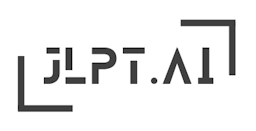

N3
音読み:han, hon
訓読み:soru, sorasu, shi-
ハンhan
ホンhon
そ.るsoru
そ.らすsorasu
し-shi-
Oppose, anti-
Imagine a person holding up a protest sign with the character '反' written on it. This represents their opposition or resistance against something they disagree with.
The kanji '反' is a moderately common character that appears in JLPT exams, particularly at the N3 level. Make sure to understand its readings and meanings in different contexts to effectively answer questions related to this kanji.
私は彼の考えに反対します。
I oppose his idea.
わたしはかれのかんがえにはんたいします。
watashi wa kare no kangae ni hantai shimasu.
反省することはたくさんあります。
There are many things to reflect on.
はんせいすることはたくさんあります。
hansei suru koto wa takusan arimasu.
彼の態度には反感を抱いた。
I felt antipathy towards his attitude.
かれのたいどにははんかんをいだいた。
kare no taido ni wa hankan o idaita.